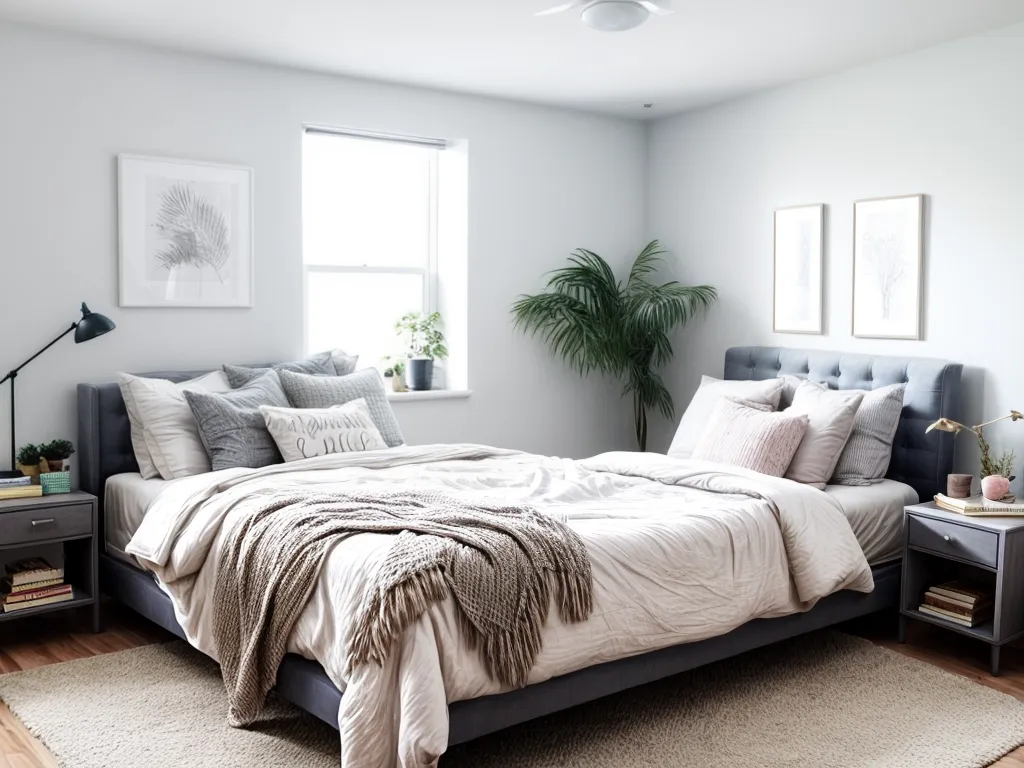Introduction
A good night’s sleep is essential for our health and wellbeing. However, our bedrooms can easily become cluttered and uncomfortable, making it difficult to get the rest we need. By refreshing your bedroom, you can create an inviting sleep space that will help you fall asleep faster and sleep more soundly throughout the night. In this article, I’ll provide tips on how to update your bedroom so you can get the most rejuvenating sleep possible.
Declutter and Organize
The first step is to clear out clutter and organize your bedroom. Clutter can create visual chaos that keeps your mind active, making it hard to unwind.
Here are some decluttering tips:
- Go through your closet and drawers and donate or throw away anything you haven’t worn in over a year.
- Store out-of-season clothing and shoes in bins under the bed or in the closet to free up space.
- Get rid of unnecessary furniture and decorations that make your room feel crowded.
- Organize books, magazines, and electronics on shelves rather than scattered about.
- Invest in storage furniture like a chest of drawers or under-bed storage bins to hide away clutter.
To stay organized:
- Make your bed every morning so your bedroom looks tidy.
- Put everything away in its designated spot before going to bed.
- Use closet organizers and storage bins to assign a home for your belongings.
Update Your Bed
Your bed is the centerpiece of your sleep space. Upgrading it can make a huge difference in your nightly comfort.
Consider these bed upgrades:
- Invest in a high-quality mattress and pillows designed for your sleep position. This ensures proper spine alignment and support.
- Choose breathable natural fabrics like cotton, silk, or linen for your sheets, comforter, and pillowcases. These feel cool against your skin.
- Add a mattress topper or mattress pad to soften a too-firm mattress or give support to a too-soft one.
- Replace worn-out bed pillows every 1-2 years as they lose support and comfort.
- Use a hypoallergenic mattress protector and wash sheets weekly to keep allergens at bay.
Create Soothing Surroundings
Make your bedroom an oasis of relaxation by updating the furnishings, lighting, and decor.
Here are some soothing ideas:
- Paint or hang curtains in cool, tranquil colors like light blue, lavender, sage green, or warm neutrals like tan or beige. Avoid bright reds or oranges that stimulate.
- Incorporate natural textures like rattan, linen, jute, or light woods for a calm look.
- Display live plants like aloe or snake plants which release oxygen at night.
- Add warm lighting like table lamps, string lights or wall sconces. Keep overhead lights dimmed in the evening.
- Minimize electronics and remove TVs – the blue light disrupts circadian rhythms.
- Play soothing background noise like a fan, white noise machine or nature sounds.
Establish a Relaxing Routine
Your nighttime habits impact how easily you fall and stay asleep. Cultivate a relaxing pre-bed routine.
Try to:
- Unplug from screens an hour before bedtime to avoid blue light.
- Have an evening tea, take a bath, read, or practice light stretches to wind down.
- Write a gratitude list or journal earlier in the evening – not right before bed when your mind should be quieting.
- Keep the bedroom cool – around 65°F or 18°C is ideal for sleep.
- Use blackout curtains or an eye mask if morning light wakes you.
- Set a reminder to go to bed at the same time each night to regulate your sleep cycle.
Conclusion
Refreshing your sleep environment can make a huge difference in the quality of your nightly rest. By decluttering, upgrading your bed, creating a tranquil atmosphere, and establishing healthy pre-bed habits, you can transform your bedroom into a sanctuary for deep, restorative sleep. With a few simple updates, you’ll look forward to escaping to your bedroom at the end of each day.







